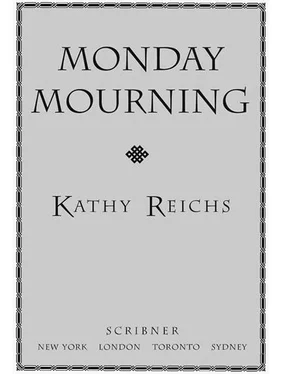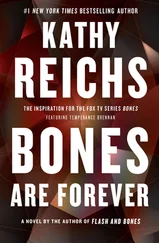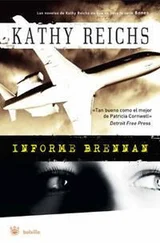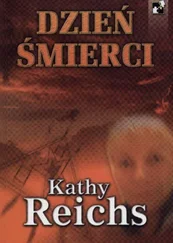Kathy Reichs - Monday Mourning
Здесь есть возможность читать онлайн «Kathy Reichs - Monday Mourning» весь текст электронной книги совершенно бесплатно (целиком полную версию без сокращений). В некоторых случаях можно слушать аудио, скачать через торрент в формате fb2 и присутствует краткое содержание. Жанр: Старинная литература, на английском языке. Описание произведения, (предисловие) а так же отзывы посетителей доступны на портале библиотеки ЛибКат.
- Название:Monday Mourning
- Автор:
- Жанр:
- Год:неизвестен
- ISBN:нет данных
- Рейтинг книги:4 / 5. Голосов: 1
-
Избранное:Добавить в избранное
- Отзывы:
-
Ваша оценка:
- 80
- 1
- 2
- 3
- 4
- 5
Monday Mourning: краткое содержание, описание и аннотация
Предлагаем к чтению аннотацию, описание, краткое содержание или предисловие (зависит от того, что написал сам автор книги «Monday Mourning»). Если вы не нашли необходимую информацию о книге — напишите в комментариях, мы постараемся отыскать её.
Monday Mourning — читать онлайн бесплатно полную книгу (весь текст) целиком
Ниже представлен текст книги, разбитый по страницам. Система сохранения места последней прочитанной страницы, позволяет с удобством читать онлайн бесплатно книгу «Monday Mourning», без необходимости каждый раз заново искать на чём Вы остановились. Поставьте закладку, и сможете в любой момент перейти на страницу, на которой закончили чтение.
Интервал:
Закладка:
Pierre LaManche had visited my office early this morning. I’d recognized the look, correctly guessed what was coming as soon as I saw him.
Bones had been found in the cellar of a pizza-by-the-slice joint, my boss had told me. The owner had called the police. The police had called the coroner. The coroner had called the medicolegal lab.
LaManche wanted me to check it out.
“Today?”
“S’il vous plaît.”
“I’m on the stand tomorrow.”
“The Pétit trial?”
I nodded.
“The remains are probably those of animals,” LaManche said in his precise, Parisian French. “It should not take you long.”
“Where?” I reached for a tablet.
LaManche read the address from a paper in his hand. Rue Ste-Catherine, a few blocks east of Centre-ville.
CUM turf.
Claudel.
The thought of working with Claudel had triggered the morning’s first “damn.”
There are some small-town departments around the island city of Montreal, but the two main players in law enforcement are the SQ and the CUM. La Sûreté du Québec is the provincial force. The SQ rules in the boonies, and in towns lacking municipal departments. The Police de la Communauté Urbaine de Montréal, or CUM, are the city cops. The island belongs to the CUM.
Luc Claudel and Michel Charbonneau are detectives with the Major Crimes Division of the CUM. As forensic anthropologist for the province of Quebec, I’ve worked with both over the years. With Charbonneau, the experience is always a pleasure. With his partner, the experience is always an experience. Though a good cop, Luc Claudel has the patience of a firecracker, the sensitivity of Vlad the Impaler, and a persistent skepticism as to the value of forensic anthropology.
Snappy dresser, though.
Dr. Energy’s crate had already been loaded with loose bones when I’d arrived in the basement two hours earlier. Though Claudel had yet to provide many details, I assumed the bone collecting had been done by the owner, perhaps with the assistance of the hapless plumber. My job had been to determine if the remains were human.
They were.
That finding had generated the morning’s second “damn.”
My next task had been to determine whether anyone else lay in repose beneath the surface of the cellar. I’d started with three exploratory techniques.
Side lighting the floor with a flashlight beam had shown depressions in the dirt. Probing had located resistance below each depression, suggesting the presence of subsurface objects. Test trenching had produced human bones.
Bad news for a leisurely review of the Pétit file.
When I’d rendered my opinion, Claudel and Charbonneau had contributed to “damn”s three through five. A few quebecois expletives had been added for emphasis.
SIJ had been called. The crime scene unit routine had begun. Lights had been set up. Pictures had been taken. While Claudel and Charbonneau questioned the owner and his assistant, a ground penetrating radar unit had been dragged around the cellar. The GPR showed subsurface disturbances beginning four inches down in each depression. Otherwise, the basement was clean.
Claudel and his semiautomatic manned rat patrol while the SIJ techs took a break and I laid out two simple four-square grids. I was attaching the last string to the last stake when Claudel enjoyed his Rambo moment with the rats.
Now what? Wait for the SIJ techs to return?
Right.
Using SIJ equipment, I shot prints and video. Then I rubbed circulation into my hands, replaced my gloves, folded into a squat, and began troweling soil from square 1-A.
As I dug, I felt the usual crime scene rush. The quickened senses. The intense curiosity. What if it’s nothing? What if it’s something?
The anxiety.
What if I smash a critically important section to hell?
I thought of other excavations. Other deaths. A wannabe saint in a burned-out church. A decapitated teen at a biker crib. Bullet-riddled dopers in a streamside grave.
I don’t know how long I’d been digging when the SIJ team returned, the taller of the two carrying a Styrofoam cup. I searched my memory for his name.
Root. Racine. Tall and thin like a root. The mnemonic worked.
René Racine. New guy. We’d processed a handful of scenes. His shorter counterpart was Pierre Gilbert. I’d known him a decade.
Sipping tepid coffee, I explained what I’d done in their absence. Then I asked Gilbert to film and haul dirt, Racine to screen.
Back to the grid.
When I’d taken square 1-A down three inches, I moved on to 1-B. Then 1-C and 1-D.
Nothing but dirt.
OK. The GPR showed a discrepancy beginning four inches below the surface.
I kept digging.
My fingers and toes numbed. My bone marrow chilled. I lost track of time.
Gilbert carried buckets of dirt from my grid to the screen. Racine sifted. Now and then Gilbert shot a pic. When all of grid one was down a level three inches, I went back to square 1-A. At a depth of six inches I shifted squares as I had before.
I’d taken two swipes at square 1-B when I noticed a change in soil color. I asked Gilbert to reposition a light.
One glance and my diastolic ratcheted up.
“Bingo.”
Gilbert squatted by my side. Racine joined him.
“Quoi?” Gilbert asked. What?
I ran the tip of my trowel around the outer edge of the blob seeping into 1-B.
“The dirt’s darker,” Racine observed.
“Staining indicates decomposition,” I explained.
Both techs looked at me.
I pointed to squares 1-C and 1-D. “Someone or something’s going south under there.”
“Alert Claudel?” Gilbert asked.
“Make his day.”
Four hours later all my digits were ice. Though I’d tuqued my head and scarved my neck, I was shivering inside my one-hundred-percent-microporous-
polyurethane-polymerized-coated-nylon-guaranteed-
to-forty-below-Celsius Kanuk parka.
Gilbert was moving around the cellar, snapping and filming from various angles. Racine was watching, gloved hands thrust into his armpits for warmth. Both looked comfy in their arctic jumpsuits.
The two homicide cops, Claudel and Charbonneau, stood side by side, feet spread, hands clasped in front of their genitals. Each wore a black woolen overcoat and black leather gloves. Neither wore a happy face.
Eight dead rats adorned the base of the walls.
The plumber’s pit and the two depressions were open to a depth of two feet. The former had yielded a few scattered bones left behind by the plumber and owner. The depression trenches were a different story.
The skeleton under grid one lay in a fetal curl. It was unclothed, and not a single artifact had turned up in the screen.
The individual under grid two had been bundled before burial. The parts we could see looked fully skeletal.
Flicking the last particles of dirt from the second burial, I set aside my paintbrush, stood, and stomped my feet to warm them.
“That a blanket?” Charbonneau’s voice sounded husky from the cold.
“Looks more like leather,” I said.
He jabbed a thumb at Dr. Energy’s crate.
“This the rest of the dude in the box?”
Sergeant-détective Michel Charbonneau was born in Chicoutimi, six hours up the St. Lawrence from Montreal, in a region known as the Saguenay. Before entering the CUM, he’d spent several years working in the West Texas oil fields. Proud of his cowboy youth, Charbonneau always addressed me in my mother tongue. His English was good, though “de”s replaced “the”s, syllables were often inappropriately accented, and his phrasing used enough slang to fill a ten-gallon hat.
“Let’s hope so.”
“You hope so?” A small vapor cloud puffed from Claudel’s mouth.
Читать дальшеИнтервал:
Закладка:
Похожие книги на «Monday Mourning»
Представляем Вашему вниманию похожие книги на «Monday Mourning» списком для выбора. Мы отобрали схожую по названию и смыслу литературу в надежде предоставить читателям больше вариантов отыскать новые, интересные, ещё непрочитанные произведения.
Обсуждение, отзывы о книге «Monday Mourning» и просто собственные мнения читателей. Оставьте ваши комментарии, напишите, что Вы думаете о произведении, его смысле или главных героях. Укажите что конкретно понравилось, а что нет, и почему Вы так считаете.








